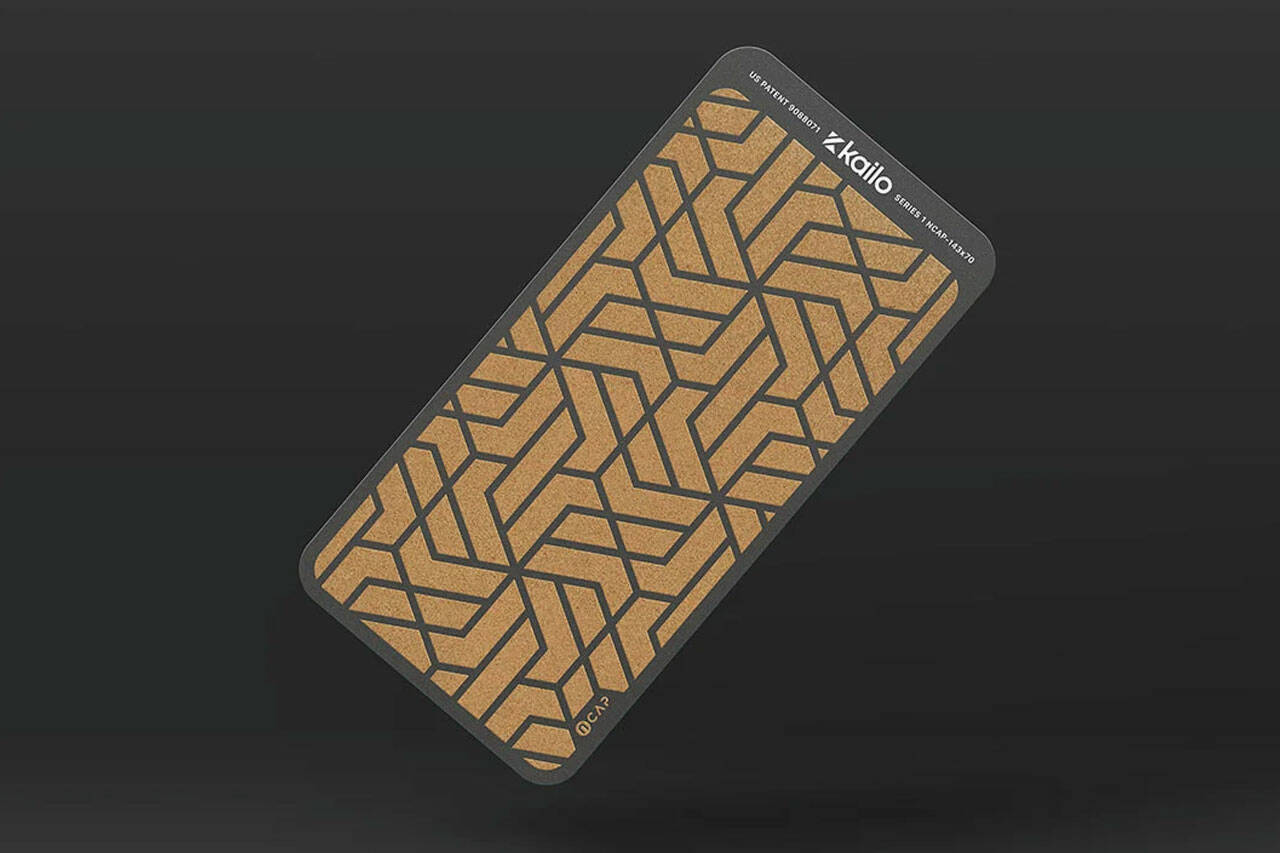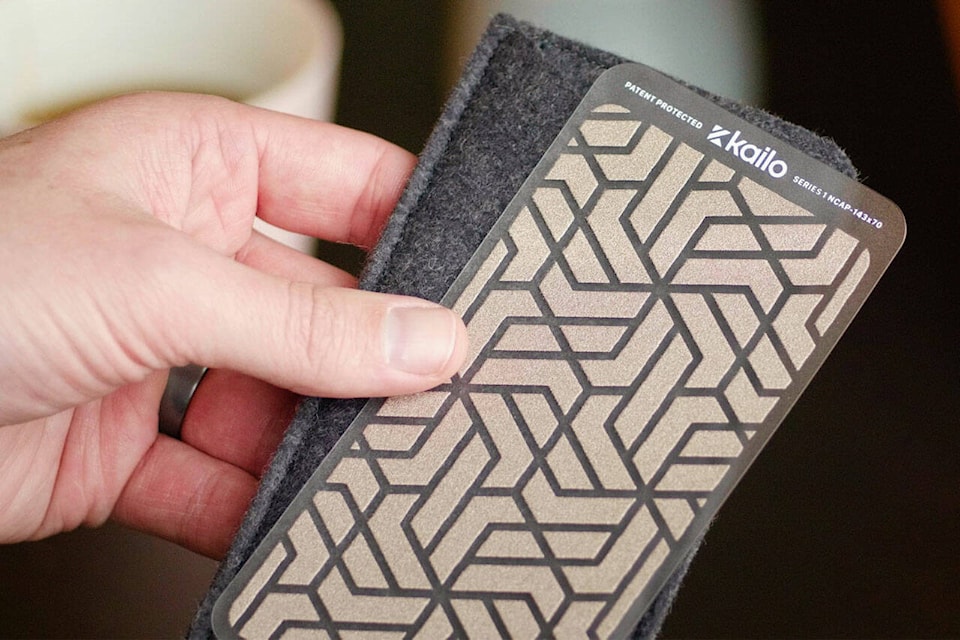Do you currently experience ongoing body aches? Would you be interested if we told you there is a way to tap into your body’s natural ability to heal itself?
One team created a novel product that reacts to electrical signals in the body, which is thought to reduce pain. What is perhaps remarkable about all of this is that the body is not exposed to any medicine or chemicals. To better understand the process under consideration, this is where it is fitting to introduce Kailo.
What is Kailo?
Kailo is marketed as an innovative, non-transdermal pain patch intended to relieve pain naturally. That’s right; it doesn’t deliver chemicals or medicine to the body. Instead, it uses an intriguing technology that encourages healing by reviving the regular conversations between the body and the brain. Studies on its applications have revealed noteworthy improvements that will encourage people to go natural in the future. The latter cannot be emphasized enough, particularly in a culture where medications are frequently prescribed for minor issues. All things considered, the only way to fully appreciate Kailo is to comprehend its mechanism, which will be covered in the following section of this in-depth review.
How does Kailo work?
The billions of charged micro-capacitors inside each Kailo Pain Relief Patch serve as the foundation for this novel solution. This patch’s purpose is to improve the body’s natural signals so that the brain can communicate with disrupted regions more effectively. This is done by stimulating the capacitors to react to existing electrical charges within us.
Clinical evaluation [1] of the potential therapeutic benefit of Kailo for 66 patients with mild, moderate, and severe pain conditions was conducted by the Clarity Science LLC team under the direction of principal investigator Dr. Jeffrey Gudin. The study’s findings, which were published in the peer-reviewed journal Anesthesia and Pain Research, included the following:
- The average BPI (Brief Pain Inventory) severity score decreased in all patients by 71%
- The average BPI Interference score for all patients dropped by 67% on average
- 97% of participants expressed being extremely or very satisfied
- 98% of participants reported less concurrent oral medical use, ranging from very little to none
- Improvements in the Quality of Life (QoL) metrics, such as mood, sleep, mobility, and interpersonal relationships
- No reported side effects
The principal researcher was generally content with “the interim results of this study” and highlighted that his team would report specific results by different severity levels. Peter Hurwitz, president of Clarity Science LLC, is also optimistic that Kailo may be able to help those affected by the opioid crisis and that this knowledge will be helpful to clinicians seeking to implement novel and multimodal therapies.
What applications of Kailo are there?
Numerous Kailo applications exist, and users should know that placement is critical. Here is a list of the various types of pain for which people may seek relief:
Head & Face Pain
Headaches can have a significant impact on one’s productivity. Individuals are instructed to position the Kailo horizontally across the side of the forehead down to the temple, with the top edge at the hairline, to relieve this type of pain. For face pain, the creators recommend applying Kailo vertically across the side of the face, with the bottom edge on the jawline and the top edge at the temple.
Elbow Pain & Shoulder Pain
Elbow pain can harm joints, cause feelings of instability and numbness, and spread pain to the arms. The creators recommend placing Kailo horizontally, primarily over the back of the upper arm just above the elbow. For the shoulders, Kailo should be positioned on the back of the shoulder at a 45-degree angle. People will need to move the Kailo up and down to establish a connection with the brain to relieve elbow and shoulder pain.
Hand & Wrist Pain
The hand and wrist can be placed in two ways to promote healing. Individuals should move Kailo up the forearm and towards the brain after first positioning it horizontally across the wrist. In the second position, Kailo is positioned by wrapping it around either side of the hand horizontally and advancing it up the side of the forearm toward the brain.
Lower Back Pain
One of the most typical types of pain felt worldwide is lower back pain. Since the advent of remote work, this has become more common. Therefore, people are instructed to position Kailo horizontally and center it at the waist across the lower back to relieve back pain. Slowly advancing the patch up the spine toward the brain is also required for maximum communication.
Knee Pain
For people who have cracking knees or other pain, the Kailo patch should be placed horizontally just below the knee, with one edge in the center of the knee. When people notice the patch reaching around the outside of the leg, they know Kailo is properly worn.
Foot & Ankle Pain
The Kailo must be horizontally positioned across the top of the foot for people who experience foot pain. Wrapping Kailo across the heel in the back of the shoe is another advantageous placement for easing foot pain. The patch can be tucked into or worn over socks for these purposes.
Trunk Pain
Nobody would have predicted that Kailo could be used to treat trunk pain. It’s interesting to note that all that is necessary to free oneself from this pain is to lay the Kailo horizontally, center it at the belly button, and slowly raise the patch toward the bottom of the rib cage.
Hip & Upper Leg Pain
Last but not least, Kailo must be positioned at a 45-degree angle across the buttocks on the side of pain, with the upper portion of the patch pointing toward the hip and the lower portion pointing towards the body’s center. This pain patch should periodically be positioned closer to the body’s center for better reception.
Keep in mind that there are countless placement suggestions; the above listed are just a few. Individuals can get more suggestions by contacting a placement expert at support@gokailo.com.

Frequently Asked Questions (FAQ)
Q. Is Kailo simply a pain patch?
A. Kailo is a non-transdermal technology that resembles a pain patch in appearance and operation. It differs from a typical pain patch because it contains no chemicals or medications. In other words, the method used to promote healing is different, but the final result is the same.
Q. What pioneering technology is employed in Kailo?
A. The patented technology used to create Kailo is allegedly used in high-tech products like antennas, signal transmission, bio-identification, and energy storage. In actuality, its application to human health was a total accident that turned out to have revolutionary effects.
Q. Does Kailo contain any metal that the body could absorb?
A. Kailo does contain two conductive metals, but research has shown that the body will not absorb these metal sources.
Q. Which side of the Kailo Pain Relief Patch is used to apply it to the skin?
A. Kailo is said to have one bumpy side and one relatively smooth side. Either side typically works when attaching the patch to the skin. However, if individuals intend to use the Kailo adhesives, the creators discovered that they adhere more effectively to the smooth side of the material.
Q. Can one wear multiple Kailo patches at once?
A. Kailo can only concentrate on one area at a time because it is designed to operate “hyper-locally.” This does not preclude wearing multiple Kailo patches at once, though. Most people prefer to wear two patches, though some have admitted to wearing three. It is crucial to remember that everyone has a different threshold, which is clearly defined. As a result, at some point, including an extra Kailo might only result in a slight improvement.
Q. Will Kailo wear out?
A. Since Kailo is thought to be highly durable, it could only break down if maintenance were utterly neglected. Even then, it should be years before this patch needs to be replaced.
Q. Is Kailo in need of recharging?
A. Kailo doesn’t have a battery, so it doesn’t require recharging or anything similar. Billions of tiny capacitors make up Kailo, designed to respond to electrical charges in the body.
Q. How is the Kailo adhesive used, and how is it removed?
A. Kailo must be placed on a flat surface with the rough side down to apply the adhesive. Both units should be stacked on top of one another with the blank side of the adhesive facing up. To remove the adhesive, peel up one corner of the adhesive from the Kailo patch, then pull it away at a low angle almost parallel to the Kailo. The remaining half of the adhesive must then be removed from the paper and put on Kailo’s smooth side.
Q. Will the Kailo adhesive cause any allergic reactions?
A. Only a small number of customers have reported allergic reactions to Kailo’s silicon-based adhesive. As a result, people allergic to silicon should avoid using Kailo with the adhesive.
Q. How long can Kailo be worn without risk?
A. Kailo can be worn all day, every day, without any risk.
Q. Is Kailo safe for expectant mothers?
A. The creators behind the Kailo Pain Patch do not recommend pregnant mothers use Kailo. The same applies to those who have a pacemaker.
Q. If the Kailo gets wet, have any adverse effects on me?
A. No, getting Kailo wet has no negative consequences. This is due to the patch being formed on a waterproof polyester substrate and coated with a dielectric coating. Kailo has been tested and found to be both water-resistant and fully submersible. If it is to be used in water, it must be dabbed with a clean, dry towel and allowed to air dry.
Q. What specific circumstances will Kailo support?
A. The team is adamant that Kailo is capable of healing everything. To be confident that this patch is safe for a specific condition, we recommend speaking with a specialist on Kailo’s team.
Q. What other areas could Kailo be useful in?
A. Kailo might also be useful to ease menstrual cramps.
Q. Do I need to take Kailo off before my MRI?
A. Kailo should not be worn during an MRI because it contains silver and copper.
Q. Which method of upkeep is ideal for Kailo?
A. Individuals are asked to clean Kailo with warm water and soap. If any adhesive residue remains, Goo Gone can be used to remove it before gently washing it. Finally, people are asked to refrain from using caustic cleaners or rubbing alcohol, as these substances may deteriorate Kailo over time.
Q. When will customers start getting Kailo shipments?
A. Domestic orders typically take 3 to 8 business days to process, while international orders can take up to 15 business days. Depending on the country, individuals may be charged customs and duties on their orders.
Q. Is Kailo protected by a money-back guarantee?
A. Yes, Kailo comes with a 90-day money-back guarantee. If customers aren’t delighted with their purchase, they can contact customer service to request a refund. Consider the following methods of communication to learn more about the Kailo refund policy:
- Email: support@gokailo.com
- Submit a ticket: https://gokailo.com/pages/contact-us
- Kailo Headquarters: 8188 S Highland Dr., Suite D1, Sandy, UT 84093, USA
How much does Kailo cost?
The Kailo Patch is currently available for $119 with free US shipping and as a kit that comes with one reusable Kailo, one free soft carry case, and three free adhesives. For any additional accessories or bundle offers, they can be obtained at the following rates (before applicable taxes):
- Kailo Buddy Pack (2 Kailos): $195
- Kailo Family Pack (5 Kailos): $469
- Kailo Group Pack (10 Kailos): $889
- Kailo KT Tape (Roll of 30): $11.99
- Kailo Original Adhesive (10 Pack): $24.99
- Kailo Soft Carry Case: $13.00
About Kailo
Kailo was founded with one commitment in mind: “To help as many people as possible live their best lives without the interference of pain.” Since its rollout, the Kailo Pain Relief Patch has established itself as a pain intensity and interference treatment, particularly in patients with arthritic, neuropathic, and musculoskeletal pain. Above all else, this pain patch is supported by cutting-edge research, with IRB-approved study findings demonstrating its efficacy at varying pain intensity levels.
Final Thoughts
It should be obvious from the analysis above that Kailo is a natural pain reliever. It primarily functions by setting off bodily signals. There are specific areas of our brains devoted to managing the body’s natural pain. When activated, they release chemicals that block pain signals. Although this is only one aspect of communication, the activation process is typically carried out using prescription medications. Kailo responds to electrical charges in the body rather than supplying the body with new substances, ensuring that both the brain and body are involved in pain relief. Given the reported improvements from previous research, it is surprising to think that Kailo was accidentally developed.
Once again, the clinical study available on Kailo’s application shows how innovative and effective it could be. Along with its intended use, the creators went above and beyond to ensure durability and ongoing uses with minimal replacement requirements. The only component that users will occasionally need to replace is the adhesive. Since a single Kailo Pain Patch can last for years, depending on how religious people are about maintenance measures, we believe the natural route is more appealing and doesn’t cost as much. To learn more about Kailo, visit here>>>.
ALSO READ:

